Archives of Loren Williams Fly Tying Tutorials.
Clouser Deep Minnow
Fly and Photos by Loren Williams
I wonder if Bob Clouser realized the impact this slightly awkward looking fly would have on the fly-fishing community-both fresh and salt water-when Lefty Kreh introduced it in the 1980's. If nothing else, this pattern has spawned numerous discussions about the threshold of fly and lure.
But does it ever catch fish. The original "beef" with the Deep Minnow was it's "jigging" action resulting from the placement of the dumbbell eyes. Most fly anglers who have/also spin fished will stand quickly to tell you that the action of the Deep Minnow can hardly be called jigging although it does rise and fall throughout the retrieve.
The severity of the fall will depend on the placement of the eyes. The more to the rear of the hook that the eyes are affixed, the more of a sliding action the fly will impart. With the eyes well up front, the fly will tend to drop with a slightly steeper and more erratic action. My personal preference is a middle of the road approach since most of my work is done on rivers and streams where depth means more than the rise/fall.
Color combinations are endless. One characteristic that I wish to keep in tact is the sparsity of the hair. If you've ever seen Mr. Clouser tie one of his Deep Minnows you'd know what I mean. The man ties them whispy...and one can only assume it is for good reason. My observations indicate that a sparsely dressed Deep Minnow not only achieves depth quicker, but it's action is increased as are the number of hooked fish. I think that a dense hair wing will impair the hooking ability of the fly. Unfortunately, commercialism--as typical-has resulted in an overdressed version.
Keep in mind that this fly rides point-up so a darker dorsal color should be placed in the point side of the shank. The recipe shown is one of my favorites to imitate general foodstuffs in the streams and rivers I fish--predominantly inhabited by smallmouth, brown trout, crayfish and sculpin. I have found that this coloration works everywhere.
MATERIALS
Hook: Mustad 3366 (SE) or 3399 (TDE)
Eyes: Spirit River I-Balz
Thread: Brown Flat "A" to mount the eyes; Brown 6/0 for the rest
Ventral Wing: Red Fox Squirrel Tail (belly)
Flash: 4 strands Copper Krystal Flash
Dorsal Wing: Natural Brown Buck Tail (Top)
Click photos to enlarge!
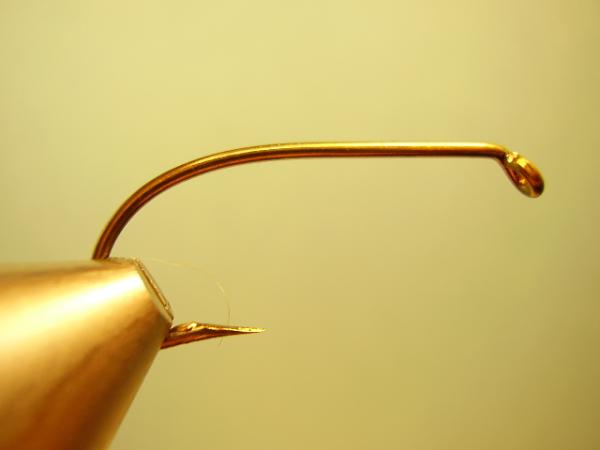
Place the debarbed hook well back in your vise jaws.
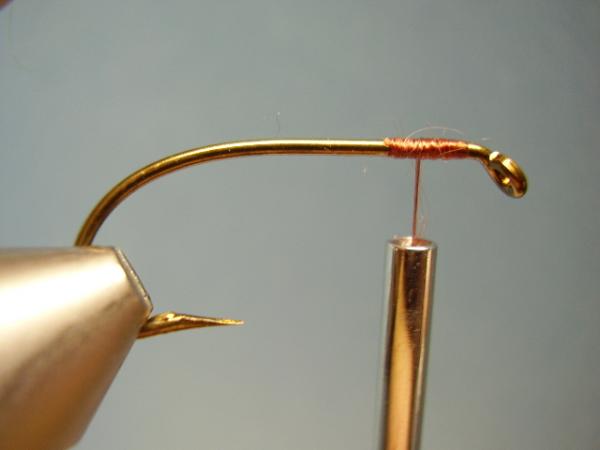
Attach some flat "A" nylon thread to the hook about 1/4 of the way back from the eye and lay a substantial base.
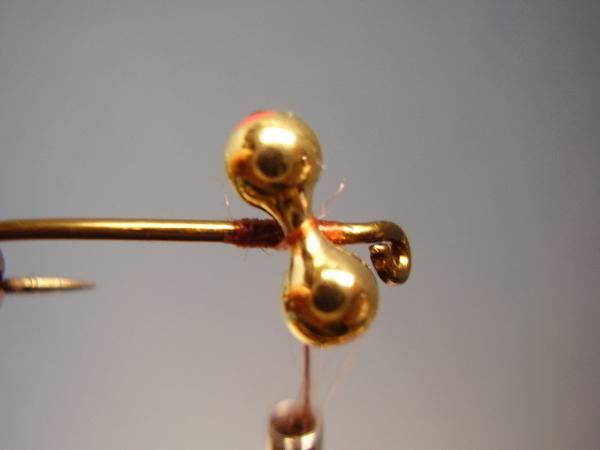
#1
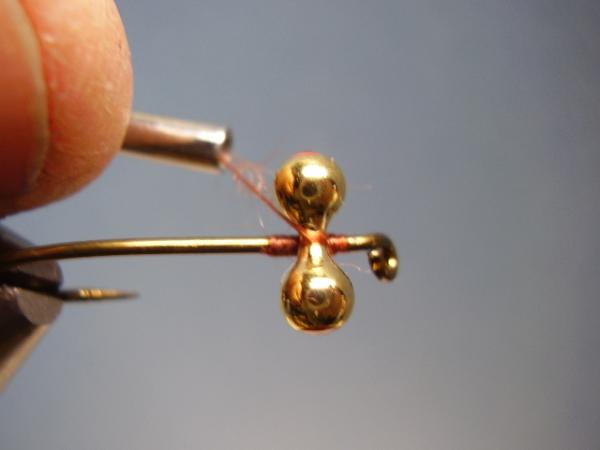
#2
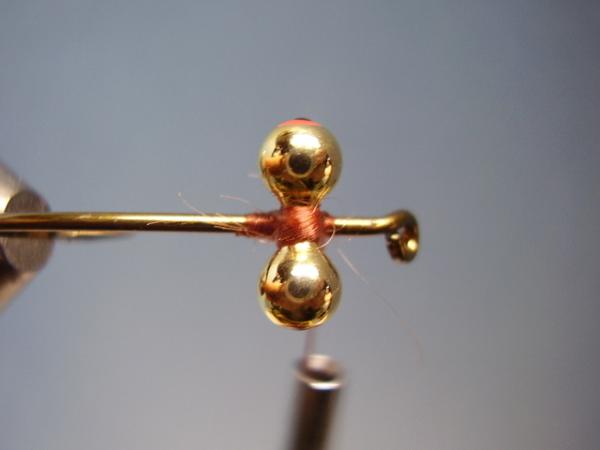
Catch in the I-Balz on top of the shank using a few "X-Wraps" as shown in the 3 photos. Check the eyes for placement. The farther to the rear, the more of a sliding action; the farther forward the more of an erratic action. After a few X-wraps you can slide the eyes into the position you favor.
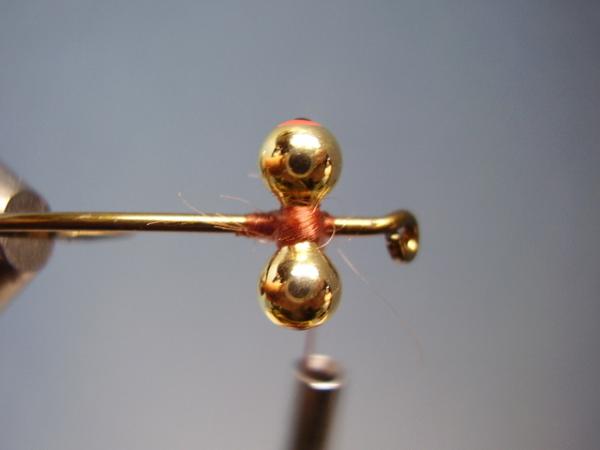
After you are pleased with the placement, make a number of additional tight x-wraps. You can see the nylon starting to fray due to the amount of pressure I am using. I choose this thread for it's strength and it's ability to absorb cement.
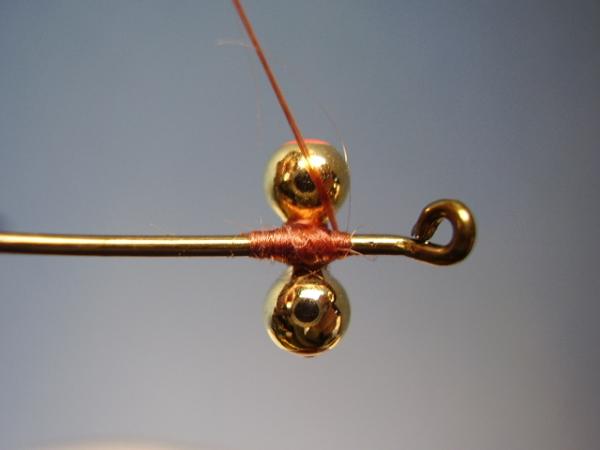
After you have laid a good number of x-wraps, change the plane of your thread and wrap around the thread only between the hook shank and the I-Balz . This will constrict the x-wraps making them extremely tight.
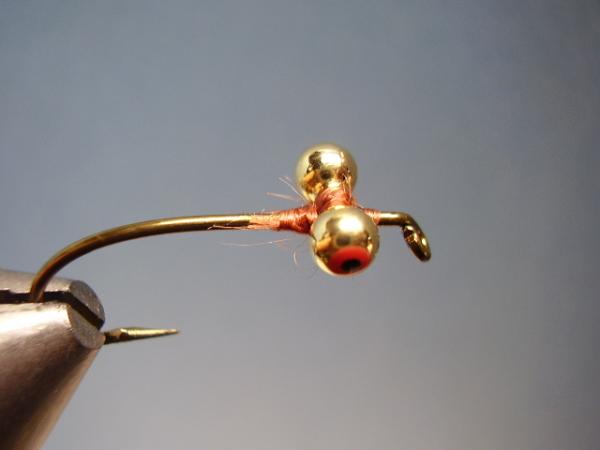
Whip finish and clip the flat "A" thread.
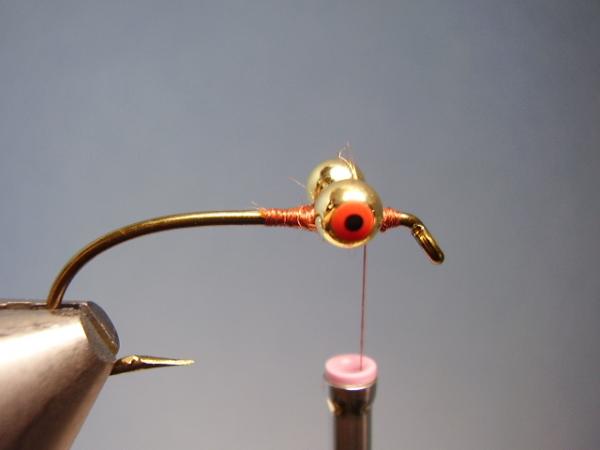
Attach the tying thread in front of the eyes.
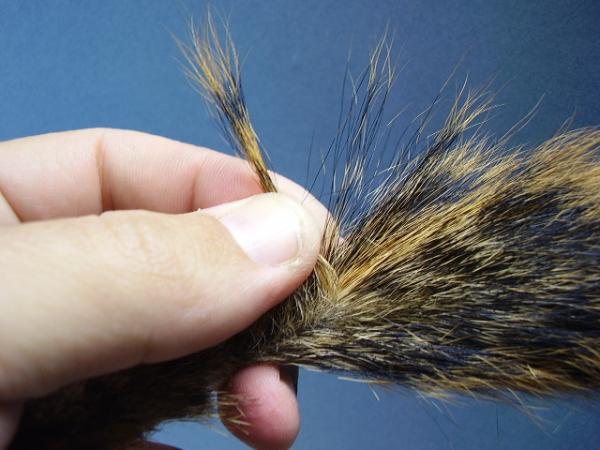
From a well-marked red fox squirrel tail, select a sparse bunch of hair. Clip it off close to the bone and grasp the bundle by the tips. Pull through the bundle to remove any shorts. I do not stack the hair on my streamers because I dislike the uniform appearance that results. If you take care in handling the squirrel hair it will be naturally aligned.
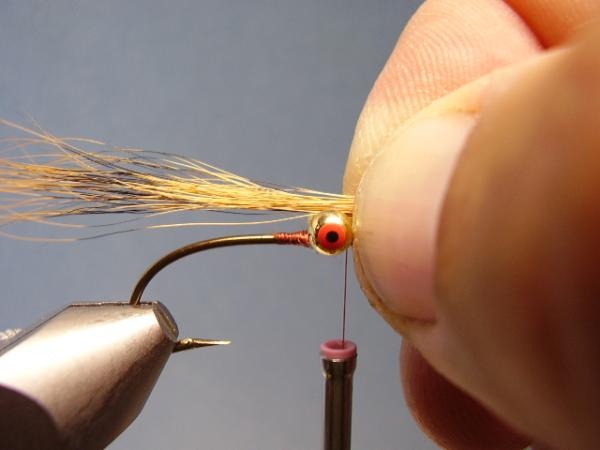
Measure the hair to be about 2-times the hook length.
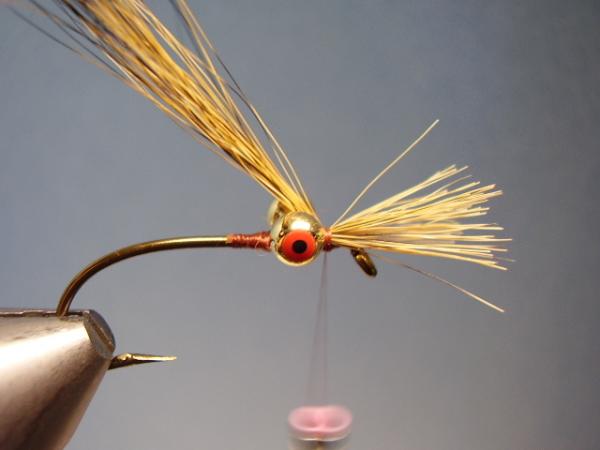
Place the measured point ahead of the I-Balz and secure with a number of very tight thread wraps. Do not wrap all the way forward to the eye--we still need to clip the butt ends!
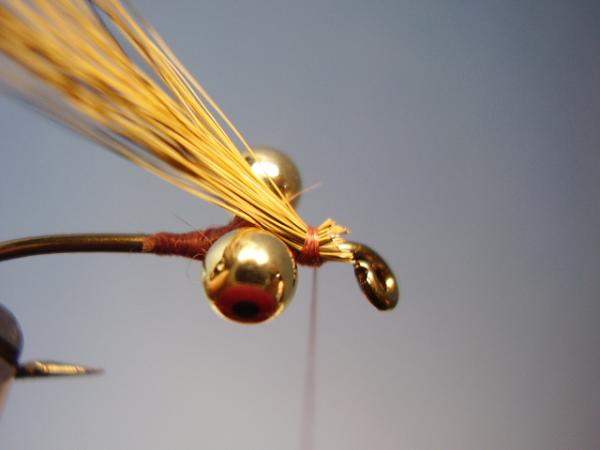
Clip the butt ends at an angle as shown, well back from the eye.
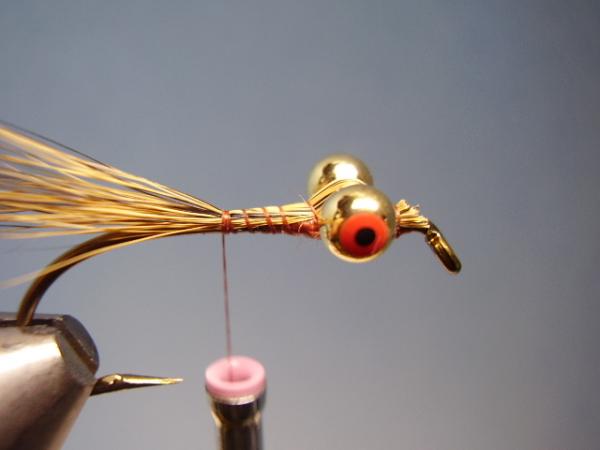
Wrap the thread rearward in tight, yet open wraps until you reach the middle of the hook.
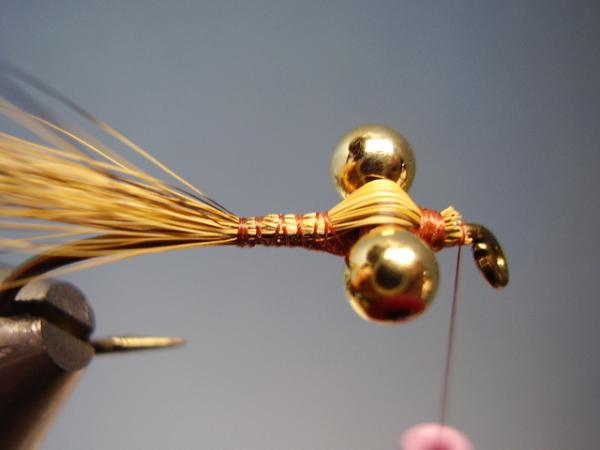
Make 3 tight wraps at the middle and then return the thread forward in matching open turns.
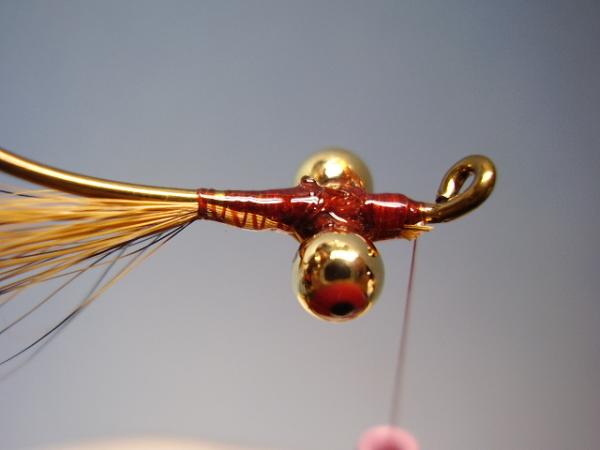
Invert the hook or rotate your vise. Give the thread wraps a good coating of cement and allow it to soak in.
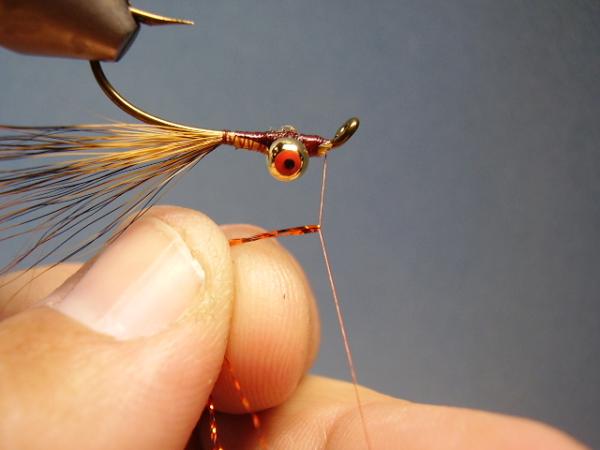
Select two long strands of copper Krystal Flash and double them around the thread...
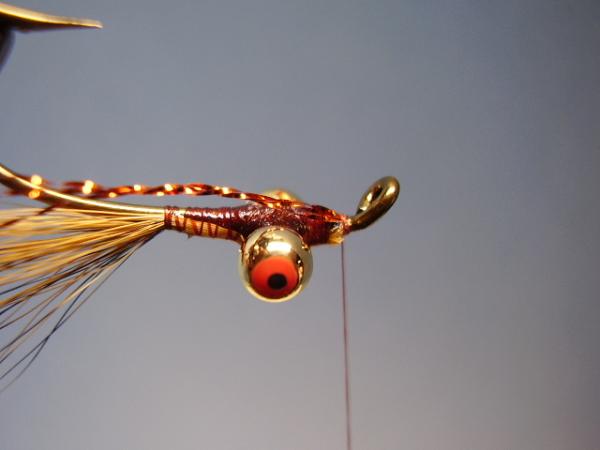
Make a turn of thread to lock them in.
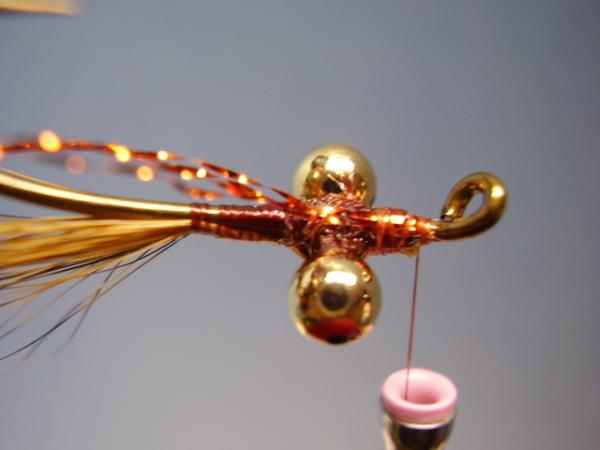
Pull them back between the eyes and secure them to just behind the eyes. Return forward with your thread.
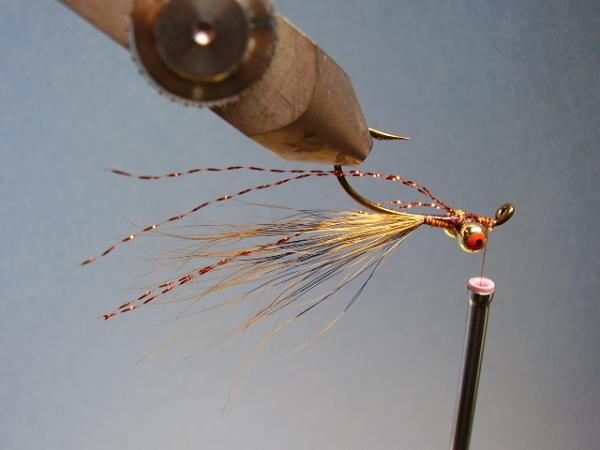
Clip to be just a bit longer than the wing.
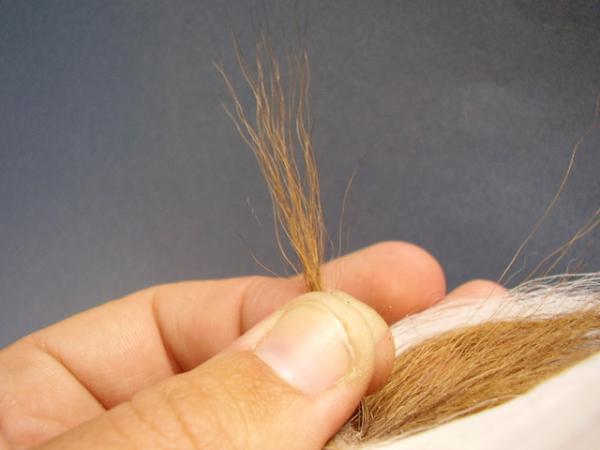
Select a sparse bundle of natural brown buck tail.
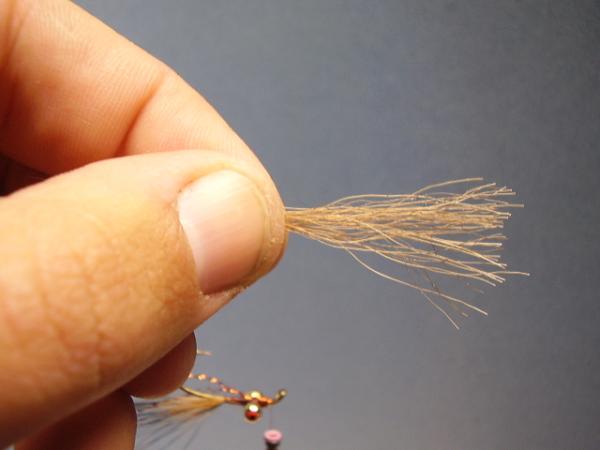
Clip the bundle close and remove the shorts. Notice how much I've used and that the hair has been left un-stacked after I removed the shorts.
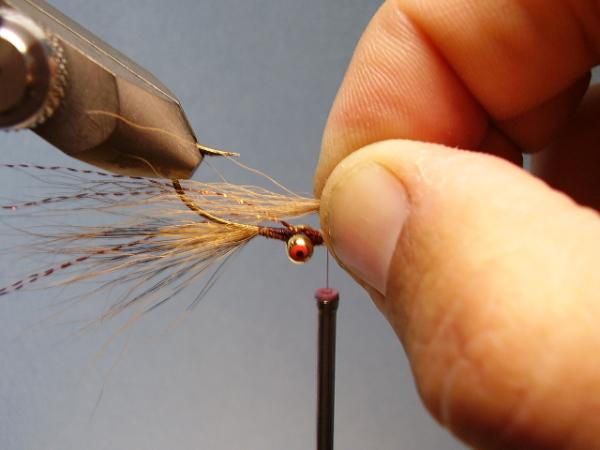
Measure for length to be roughly equal to the squirrel.
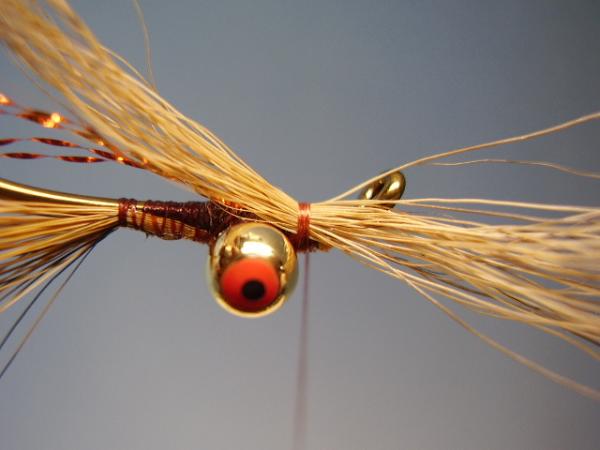
Secure the bundle with a few tight thread wraps between the I-Balz and hook eye.
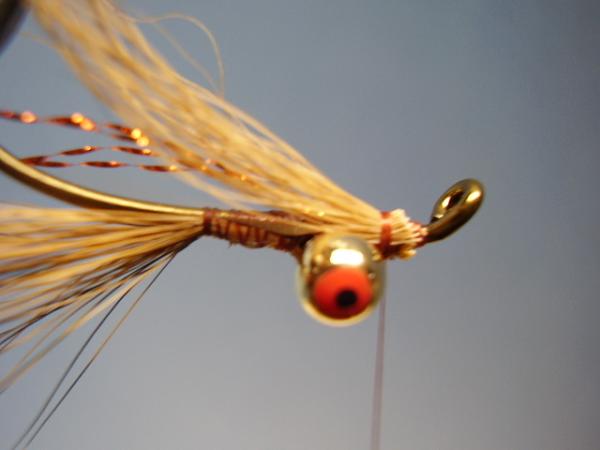
Trim the butts at an angle well behind the eye.
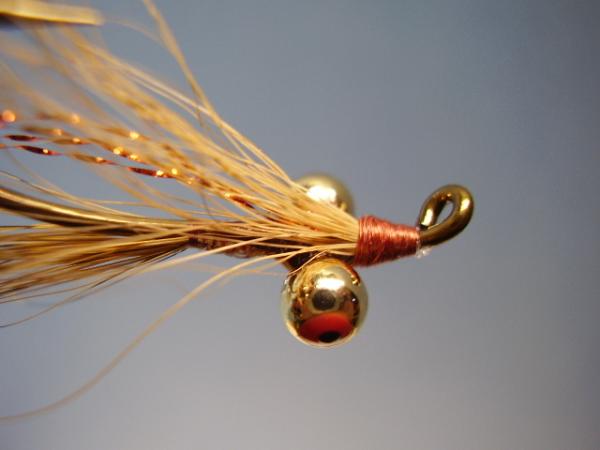
Build a conical "nose" tapering from the I-Balz to the hook eye. No need to overdo things here, just make a neat taper that covers the hair butts.
Whip and snip.
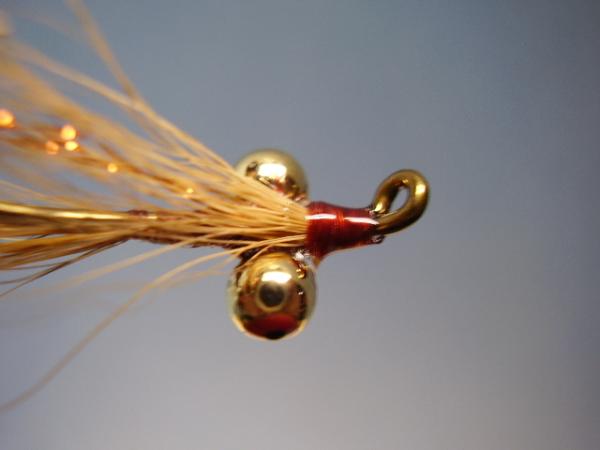
Coat the nose with cement.
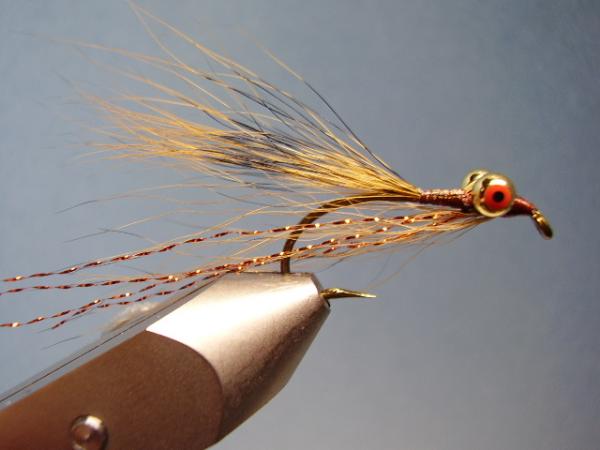
A completed Clouser Deep Minnow!